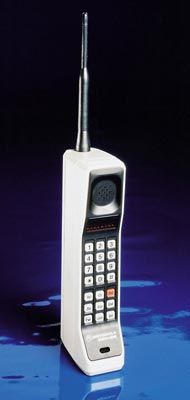Analog Cell Phones
In 1983, the analog cell phone standard called AMPS (Advanced Mobile Phone System) was approved by the U.S. Federal Communications Commission (FCC) and first used in Chicago. AMPS uses a range of frequencies between 824 megahertz (MHz) and 894 MHz for analog cell phones. In order to encourage competition and keep prices low, the U. S. government required the presence of two carriers in every market, known as A and B carriers. One of the carriers was normally the local-exchange carrier (LEC), a fancy way of saying the local phone company.
Carriers A and B are each assigned 832 frequencies: 790 for voice and 42 for data. A pair of frequencies (one to transmit and one to receive) is used to create one channel. The frequencies used in analog voice channels are typically 30 kilohertz (kHz) wide -- 30 kHz was chosen as the standard size because it gives you voice quality comparable to a wired telephone.
Advertisement
The transmit and receive frequencies of each voice channel are separated by 45 MHz to keep them from interfering with each other. Each carrier has 395 voice channels, as well as 21 data channels to use for housekeeping activities like registration and paging.
A version of AMPS known as Narrowband Advanced Mobile Phone Service (NAMPS) incorporates some digital technology to allow the system to carry about three times as many calls as the original version. Even though it uses digital technology, it is still considered analog. AMPS and NAMPS only operate in the 800-MHz band and don't offer many of the features common in digital cellular service, such as e-mail and Web browsing.
